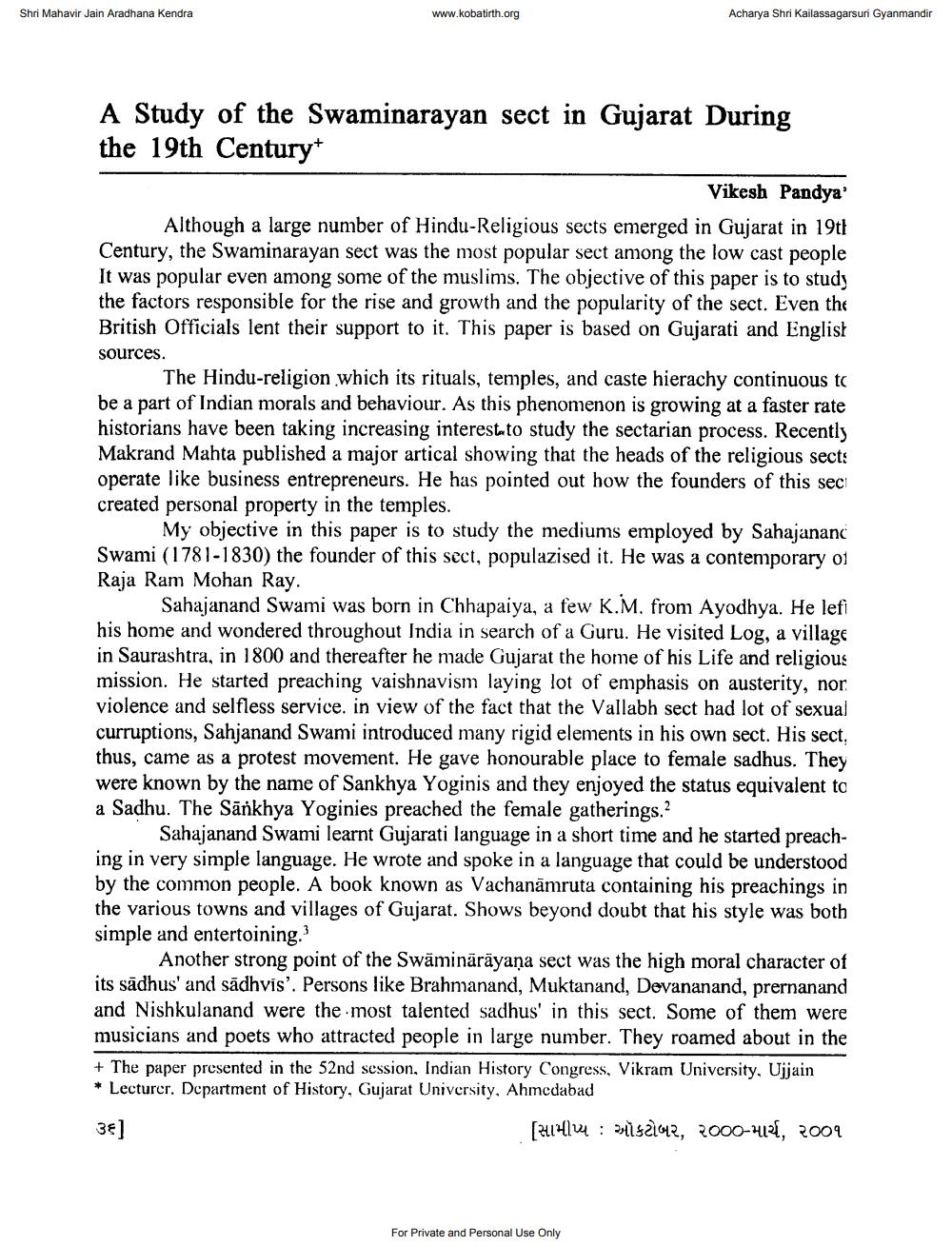________________
Shri Mahavir Jain Aradhana Kendra
www.kobatirth.org
Acharya Shri Kailassagarsuri Gyanmandir
A Study of the Swaminarayan sect in Gujarat During the 19th Century*
Vikesh Pandya'
Although a large number of Hindu-Religious sects emerged in Gujarat in 19th Century, the Swaminarayan sect was the most popular sect among the low cast people It was popular even among some of the muslims. The objective of this paper is to study the factors responsible for the rise and growth and the popularity of the sect. Even the British Officials lent their support to it. This paper is based on Gujarati and English
sources.
The Hindu-religion which its rituals, temples, and caste hierachy continuous tc be a part of Indian morals and behaviour. As this phenomenon is growing at a faster rate historians have been taking increasing interest to study the sectarian process. Recently Makrand Mahta published a major artical showing that the heads of the religious sects operate like business entrepreneurs. He has pointed out how the founders of this sec created personal property in the temples.
My objective in this paper is to study the mediums employed by Sahajananc Swami (1781-1830) the founder of this sect, populazised it. He was a contemporary of Raja Ram Mohan Ray.
Sahajanand Swami was born in Chhapaiya, a few K.M. from Ayodhya. He lefi his home and wondered throughout India in search of a Guru. He visited Log, a village in Saurashtra, in 1800 and thereafter he made Gujarat the home of his Life and religious mission. He started preaching vaishnavism laying lot of emphasis on austerity, nor violence and selfless service. in view of the fact that the Vallabh sect had lot of sexual curruptions, Sahjanand Swami introduced many rigid elements in his own sect. His sect, thus, came as a protest movement. He gave honourable place to female sadhus. They were known by the name of Sankhya Yoginis and they enjoyed the status equivalent to a Sadhu. The Sankhya Yoginies preached the female gatherings.?
Sahajanand Swami learnt Gujarati language in a short time and he started preaching in very simple language. He wrote and spoke in a language that could be understood by the common people. A book known as Vachanamruta containing his preachings in the various towns and villages of Gujarat. Shows beyond doubt that his style was both simple and entertaining.3
Another strong point of the Swäminārāyaṇa sect was the high moral character of its sadhus' and sadhvis'. Persons like Brahmanand, Muktanand, Devananand, prernanand and Nishkulanand were the most talented sadhus' in this sect. Some of them were musicians and poets who attracted people in large number. They roamed about in the + The paper presented in the 52nd session, Indian History Congress, Vikram University, Ujjain * Lecturer. Department of History, Gujarat University, Ahmedabad
૩૬]
[સામીપ્ય : ઑકટોબર, ૨૦૦૦-માર્ચ, ૨૦૦૧
For Private and Personal Use Only




